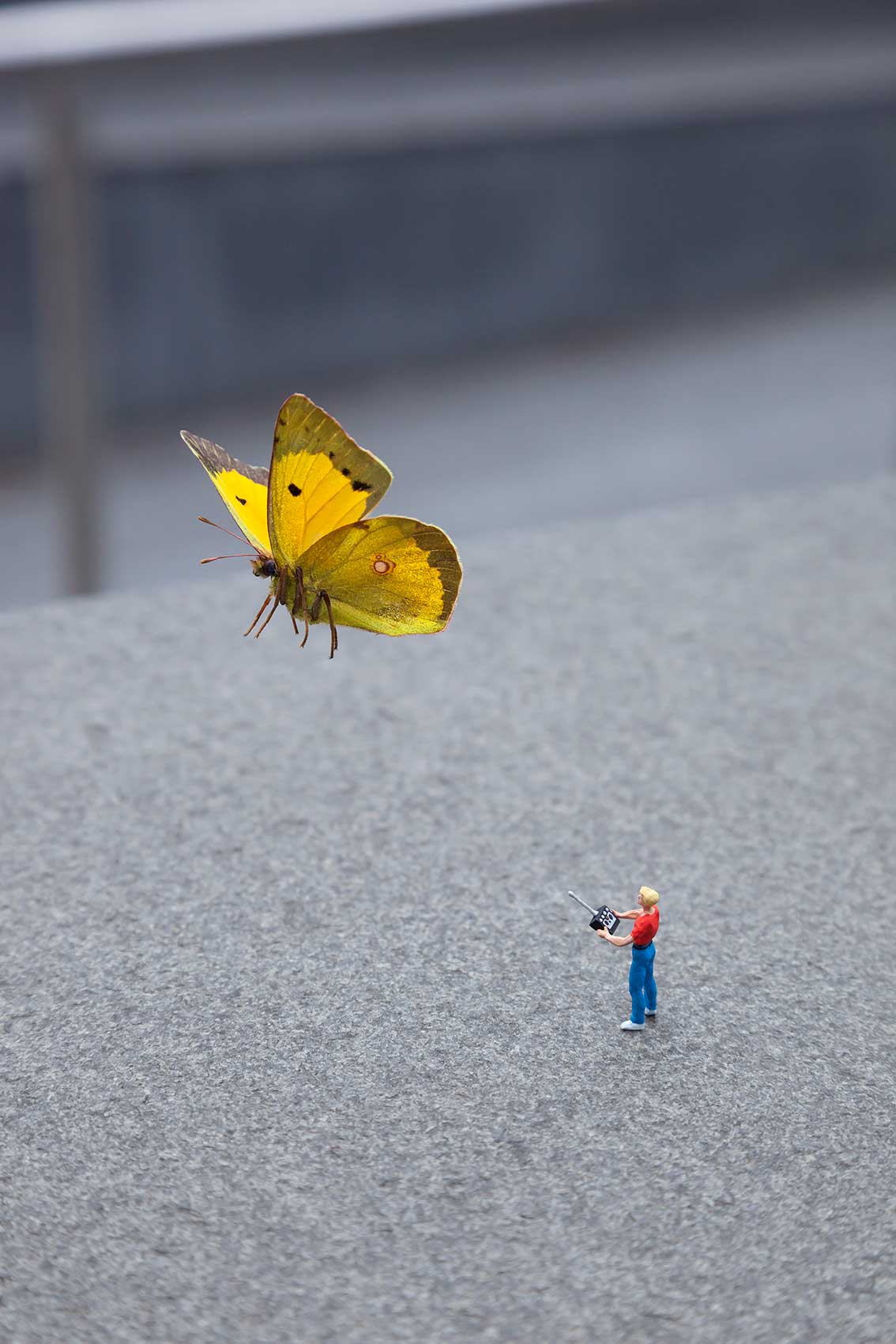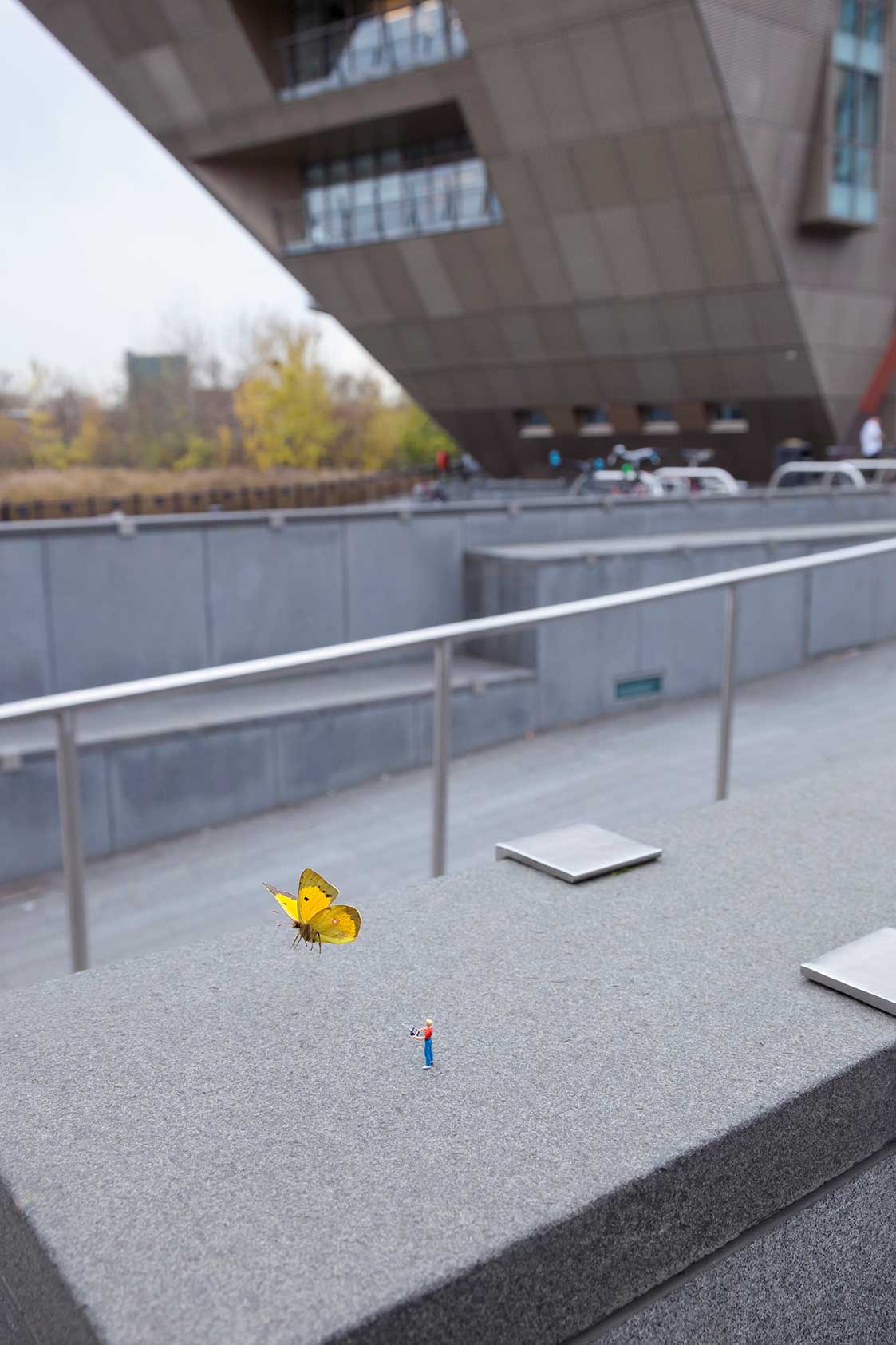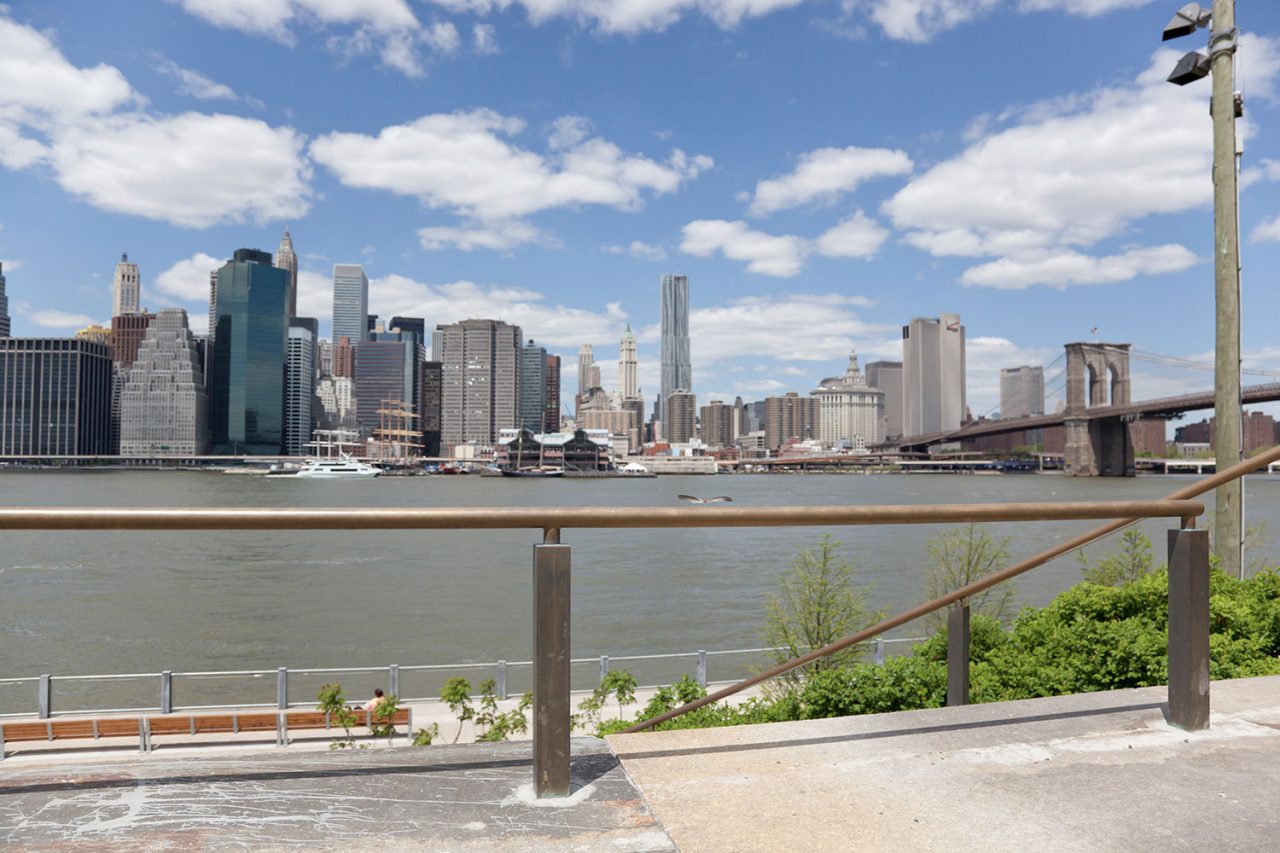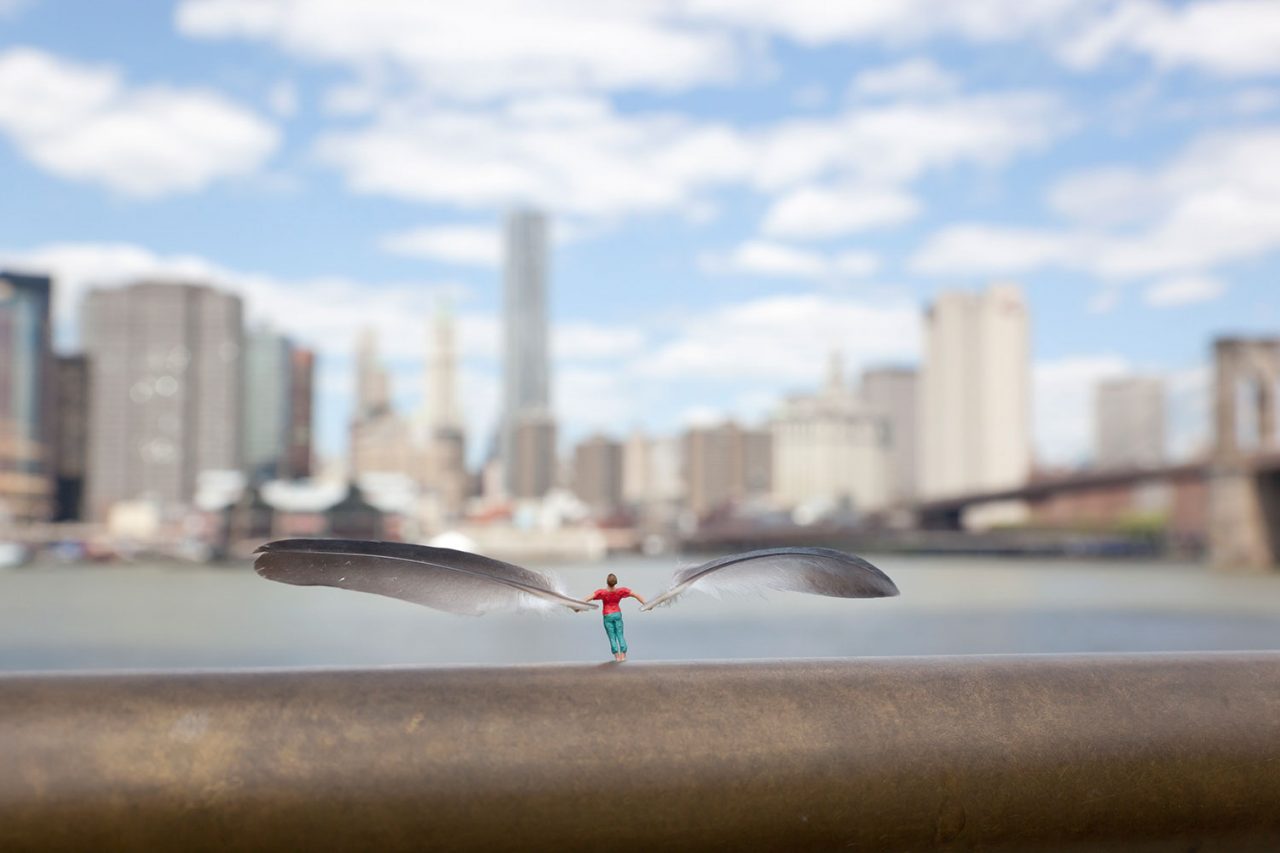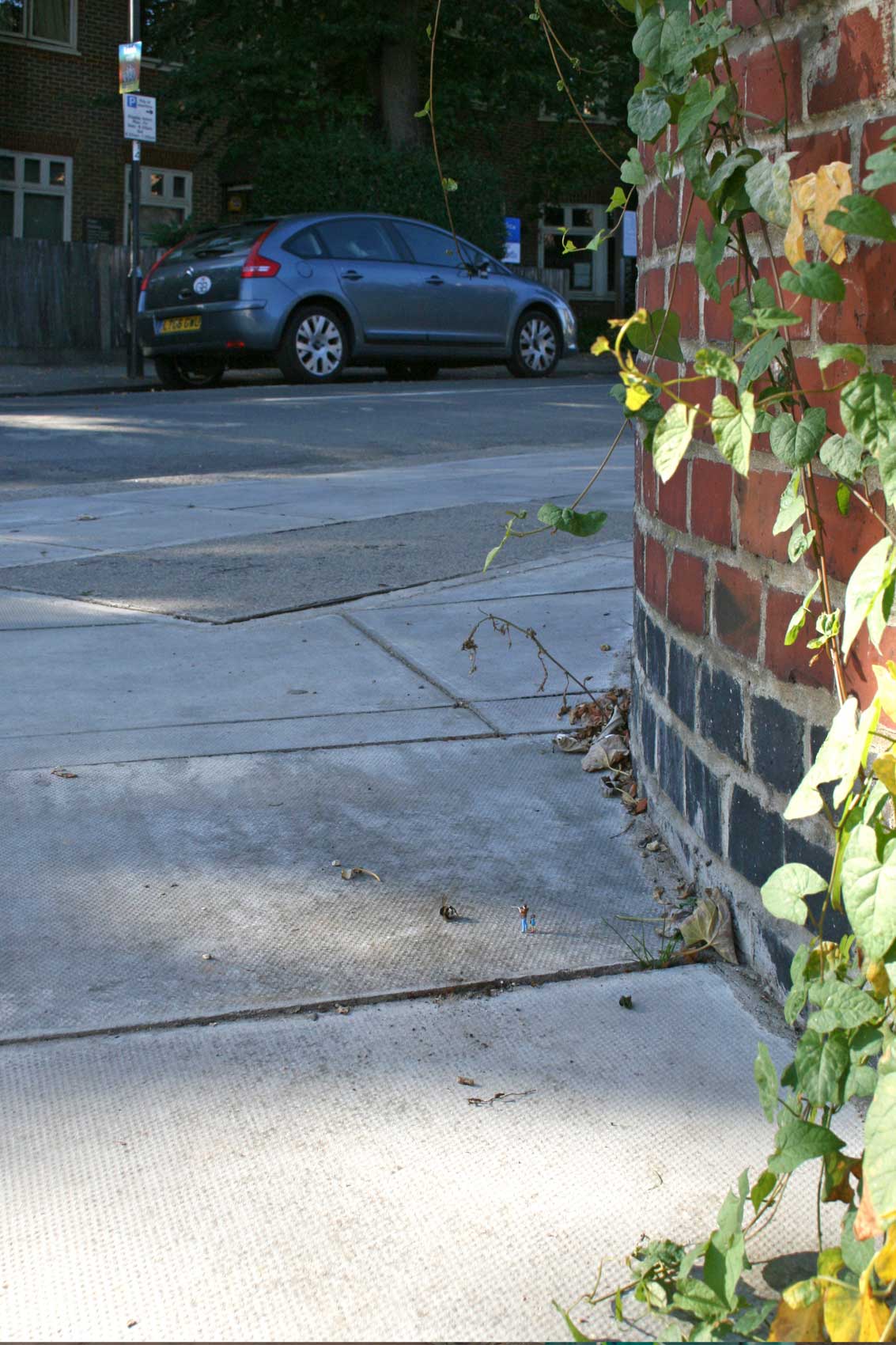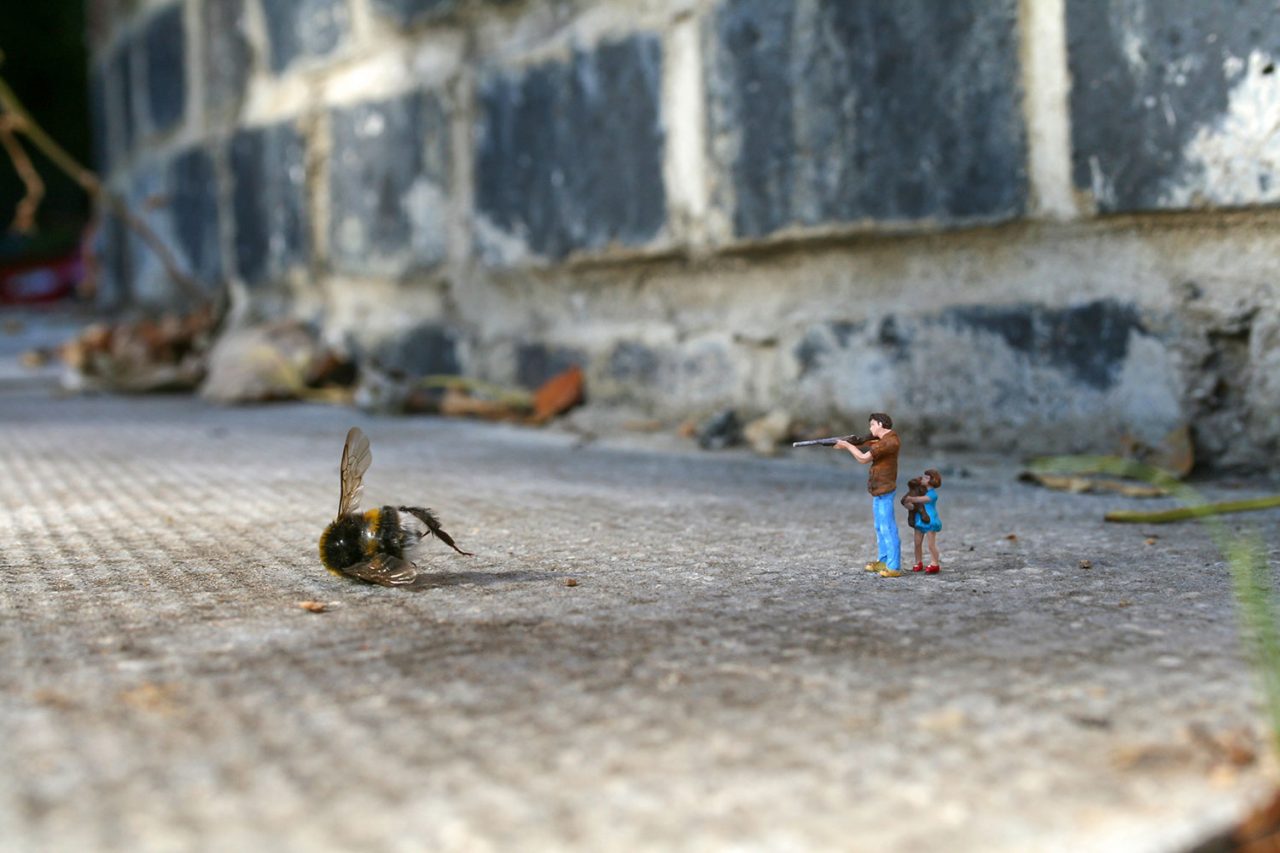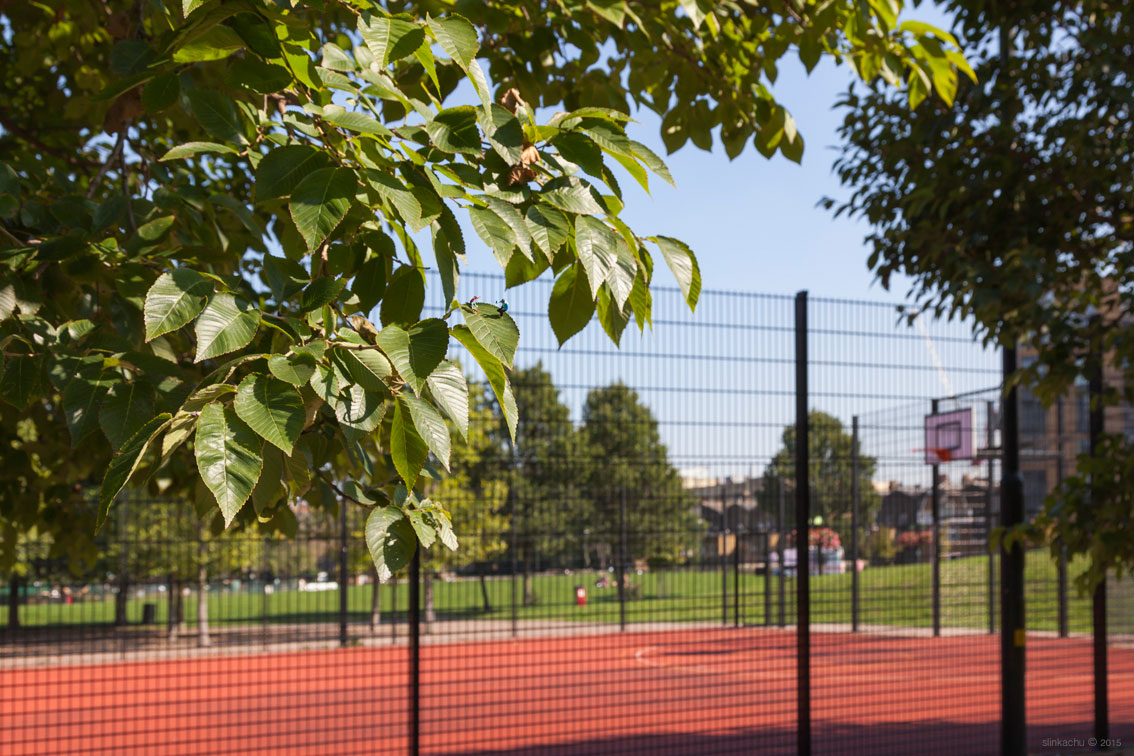About the Cover
Slinkachu & Daniela Silva
The street artist Slinkachu has been abandoning his miniature people on the streets of cities around the world since 2006. His work involves remodelling and painting miniature train set characters, which he then places and leaves on the street. It is at once sculpture, street art installation and photography. He spoke with Granta’s senior designer Daniela Silva about the cover for Animalia, the origins of the project and how photography and art can help us understand our relationship with the animal kingdom.
When did you start taking photographs?
I started my photography in 2006. At first I was just using a simple point and click camera to record my miniature street installations, but over time I became more interested in the photography itself and its ability to help tell the stories in my installations. I bought a professional camera and taught myself how to use it.
How did you start working with miniatures and what motivates you to go on working with them?
I’ve always loved toys. The miniature figures from train sets have always fascinated me. I had a train set when I was younger and it was the little people and houses and trees that I loved rather than the trains which I really had no interest in. I think I enjoyed the idea of being able to create a world using these scaled-down elements. One day, as an adult, I was sitting outside in London and I started daydreaming about those miniature people, imagining what my reaction would be if I saw one below me on the street. I just loved the idea that this ‘underworld’ of little people could be discovered on the streets, like a modern day Lilliput.
Your main subjects are the environment and globalisation, yet you add irony and humour to your work. Why is it important to handle these topics with humour?
I like to use the miniatures to explore how we, as real-life humans, deal with living in urban areas – the feelings of being lost and overwhelmed by your surroundings. There is a melancholy to my work that perhaps reflects some of my own thoughts on the loneliness of city life, but humor is also important too. I think there is often an inherent absurdity to modern life that I try to reflect. But humor is also a covert way to bring up more serious issues.
How did you come up with Animalia cover?
In the past I have often explored the ways in which we interact with the natural world. I had many ideas for the cover image, but one of my favorites, that I had sketched time and again in my sketchbook, was that of a miniature figure controlling a butterfly as if it was a drone. I read a few years ago about a kit that you could buy that, using electrodes, can be plugged in to a living cockroach to control it. There is something macabre but fascinating about that. I am sure that the governments of the world are already flying around bugs implanted with cameras. It’s a very human desire to take something from the natural world and subvert and control it for our own ends. The miniature figures in my work don’t often have much control of the human-sized world around them; indeed I like to explore the problems that they face in the urban environment and to mirror our own problems. But they do manage to exert control over the natural world.
Can you tell us a little about the process behind that photo-shoot?
I tried different locations around London for this installation, some more natural, but in the end we decided that a very urban location worked best. The contrast of the beautiful butterfly with the stark concrete of Canada Water worked well to juxtapose the natural and man-made. The butterfly just looks out of place. I enjoy playing around with perspective tricks in my images, creating illusions in-camera rather than using a computer to retouch. In this image, the butterfly is suspended using a wire hidden behind it due to the perspective of the shot.
What are your thoughts on our relationship with the animal kingdom – can photography and art help us see that relationship in a different way?
It is only through photography and film that many of us get to experience the animal kingdom. I have nothing but respect for wildlife photographers that will wait for days, weeks or months just to get that one perfect shot of some rare animal. Recent advances in photographic equipment (and yes, drones!) are changing the way we get to view the natural world. We can get closer to nature than ever before and that intimacy can only help increase our empathy.

